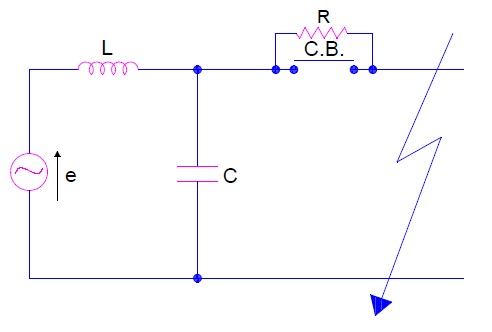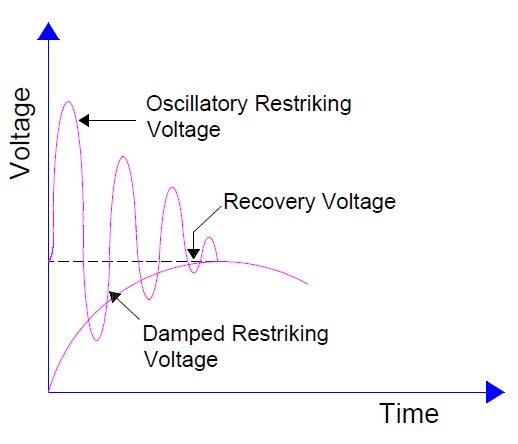Resistance Switching in Circuit Breaker refers to a method adopted for dampening the over voltage transients due to current chopping, capacitive current breaking etc. In this method, a shunt resistance is connected across the contacts of circuit breaker.
How does Resistance Switching Work?
Let us consider a circuit and connect a shunt resistance R across the contacts of the breaker as shown below. Suppose a fault occurs on the line. Because of the occurrence of fault, the contacts of breaker will open and an arc will stuck between the contacts.
Since the contacts of breaker are shunted by resistance R, therefore a part of arc current will flow through this resistance R. Due to this the magnitude of arc current will reduce which in turn will result in increase in the rate of de-ionization of arc path. In this way, the arc resistance increases. This increased arc resistance leads to further increases in the current through the shunt resistance R. Thus again, the arc current will reduce and hence the arc resistance increases. This cumulative process will continue till the magnitude of arc current becomes so low that it is not able to maintain the arc. Thus the arc extinguishes and the current is interrupted by the breaker.
Resistance Switching also reduces the oscillatory growth of Re-striking Voltage. The natural frequency of the circuit shown above is given by
fn = (1/2π)√(1/LC – 1/4R2C2)
The main role of shunt resistance R is to limit the growth of re-strike voltage and cause it to grow exponentially up to recovery voltage. If the value of R is so selected that the circuit becomes critically damped then re-strike voltage rises exponentially till recovery voltage is reached.
The value of R for critical damping can be find as
1/LC – 1/4R2C2 = 0
⇒ 1/LC = 1/4R2C2
⇒ L = 4R2C
⇒ R2 = L / 4C
⇒ R = 0.5 √(L/C)
Thus the advantages of resistance switching are as follows:
- It reduces the rate of rise of re-striking voltage and the peak value of re-striking voltage.
- Resistance Switching helps to reduce the voltage transient surge during current chopping and capacitive current breaking.

